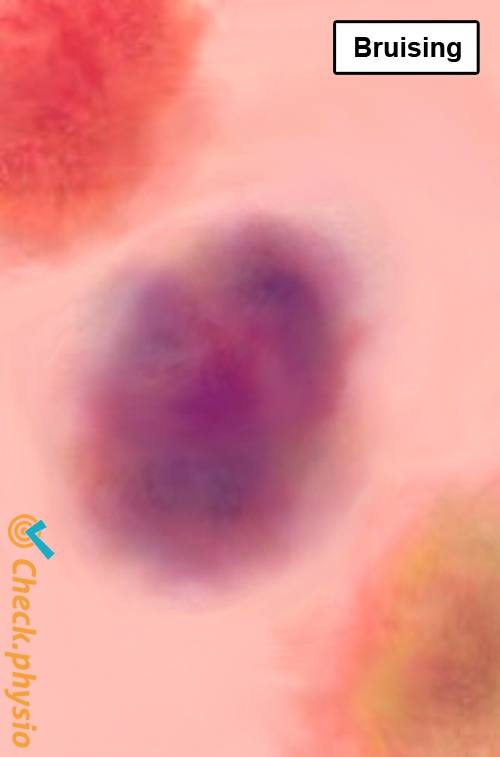Bruising
Contusion
A bruise is the result of a blunt force causing damage to the subcutaneous tissue. The result is a painful, swollen area that can turn blue. A bruise usually heals without intervention.

Description of the condition
A fall or bump can cause damage to the subcutaneous capillaries. These are the very small blood vessels that penetrate deep inside the various tissues of the body. Damage causes blood to be released from the capillaries. This can be observed as swelling, blood under the skin or bruising.
Depending on the nature of the injury, the capillaries can be damaged at all levels. For example, the capillaries in the skin, the subcutaneous tissue, the muscles and the bone. The skin usually remains in tact and there is no wound.
Cause and origin
The symptoms are usually caused by a fall or bump. In theory, this can affect any part of the body (for example: arm, shoulder, elbow, wrist, hand, finger, leg, knee, ankle, foot, head or trunk).
Signs & symptoms
- Pain at a clearly defined location.
- The bruise is sensitive to touch.
- There is swelling, blood (haematoma) or a bruise.
- The bruise can undergo various colour changes.
- Movements of the affected body part can be painful, because the damaged structures are stretched or experience pressure.
Diagnosis
Treatment
Application of cold compresses can limit the swelling and pain. A bruise generally does not require treatment. The symptoms usually disappear spontaneously within several days to weeks. A severe bruise can take 3 to 6 weeks to heal.
Exercises
You can check your symptoms using the online physiotherapy check or make an appointment with a physiotherapy practice in your area.
References
Zaagman-van Buuren, M.J. & Jong, J.T.E. de (1997). Algemene ziekteleer. Tweede, herziene druk. Houten/Diegen: Bohn Stafleu van Loghum.


